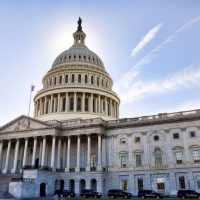The SECURE Act – Eliminating the Stretch IRA and Creating Unique Rules for Younger Participants

Post Authored by Brian Bentrup
The Setting Every Community Up for Retirement Enhancement Act of 2019 (the “SECURE Act”) was signed into law on December 20, 2019, by President Donald Trump. It significantly and fundamentally alters retirement in the United States.
The purpose of the SECURE Act is to increase access to tax-advantaged accounts, prevent older participants from outliving their assets, and help younger participants start saving more and at an earlier age. A portion of the SECURE Act addresses the grim outlook for many workers who do not have access to workplace retirement accounts due to lack of qualifying work type, hours or wages, and also attempts to remedy the factors that make it economically or administratively impossible for small businesses to offer such plans to their employees.
Elimination of the Stretch IRA Provision (and New Distribution Rules)
Arguably, the most significant change is the removal of the Stretch IRA provision, which allowed non-spouses inheriting retirement accounts to stretch out disbursements over their lifetimes. The SECURE Act modifies the required minimum distributions (“RMDs”) upon the death of the account owner. The new rule generally requires the balance to be distributed within ten years following the account owner’s death. § 401(a)(1). The following people are exempt from § 401’s ten-year distribution rule: the surviving spouse, disabled or chronically ill people, individuals who are ten years younger or less than the account owner, or the account owner’s child, who has not yet reached the age of majority. § 401(a)(2). This change is expected to generate an estimated $15.7 billion in additional tax revenue.[1]
It also extends the age for retirement plan participants to take required RMDs, from 70.5 years to 72 years, for anyone who is not 70.5 years old by the end of 2019. § 114. The House of Representatives acknowledged that the RMD age of 70.5 was decided in the 1960s, but had not been updated, even though Americans are living longer.
Finally, the SECURE Act eliminates the maximum age requirement for traditional IRA contributions; previously, it was capped at 70.5 years of age. To support this change, the House Committee on Ways and Means said “[a]s Americans live longer, an increasing number continue employment beyond traditional retirement age,” in a summary of the bill.[2] It does not provide a new age cap.
The SECURE Act profoundly affects retirement by getting rid of the Stretch IRA provision, changing the rules affecting RMDs, and eliminating the age cap for IRA contributions. But the Act is not just limited to senior citizens. It also affects younger participants in a variety of ways.
How the SECURE Act Affects Part-Time Employees, Students, and Younger Participants
The SECURE Act now applies to part-time employees that worked less than 1,000 hours per year. Under the old rules, employers did not have to invite workers who worked less than 1,000 hours a year to participate in a retirement plan. Currently, the threshold for eligibility under the SECURE Act is either one full year with 1,000 hours worked, or three consecutive years working at least 500 hours. § 112(a)(1). Failing to extend retirement plans to part-time employees disadvantaged women, because they are more likely to work part-time. As a result, it was especially harmful to their retirement plans. Section 112 attempts to remedy that.
There are also unique student benefits under the Act. Specifically, the SECURE Act now allows stipends and non-tuition fellowship payments, received by graduate and postdoctoral students, to be treated as compensation and acceptable for IRA contribution purposes. § 106(a). Tax-advantaged 529 accounts can also be used for qualified student loan repayments-up to $10,000 annually. § 303(b).
The Act also created an early withdrawal penalty tax exemption from an IRA to use for childcare costs in the year after adopting or the birth of a child; specifically, the tax allows for parents to take up to $5,000. § 113(a). Section 113(a) helps parents deal with the high costs of raising new children, while also allowing them to pay the money back.
Finally, credit card-based loans are prohibited. Due to the ease of obtaining these loans in the past, many younger workers withdrew from qualified plans. § 108(a).
Thus, the SECURE Act will help younger participants save earlier in their working careers, allow them to save more throughout their working years, and avoid penalties for experiencing traditional life events at the beginning or end of a career.
[1] Daniel Kurt, What is the SECURE Act and How Could it Affect Your Retirement?, Investopedia (Jan. 20, 2020), https://www.investopedia.com/what-is-secure-act-how-affect-retirement-4692743.
[2] Alessandra Malito, The SECURE Act is changing retirement – here are the most important things to know, MarketWatch (Jan. 8, 2020, 10:00 AM), https://www.marketwatch.com/story/with-president-trumps-signature-the-secure-act-is-passed-here-are-the-most-important-things-to-know-2019-12-21.
